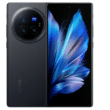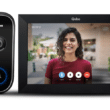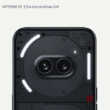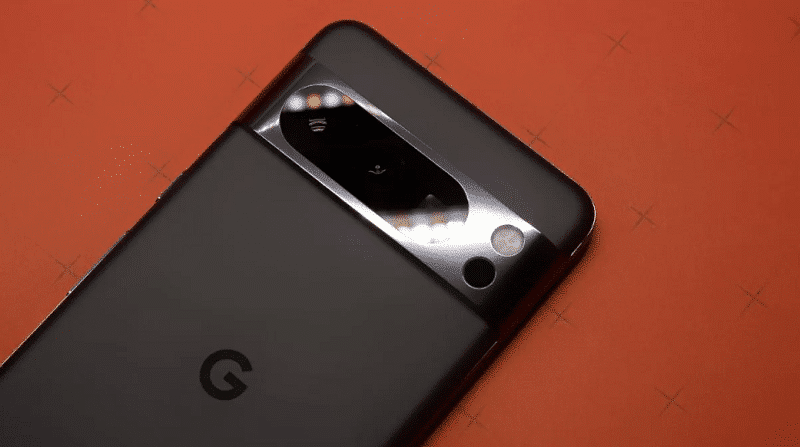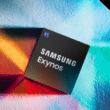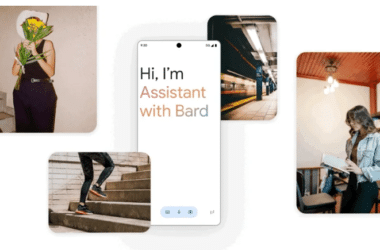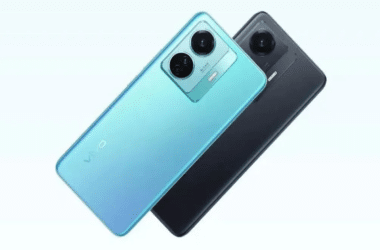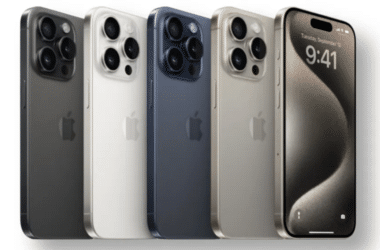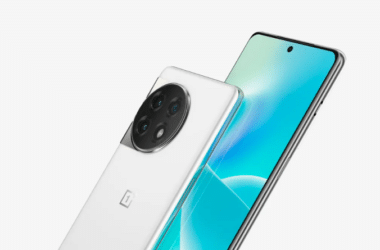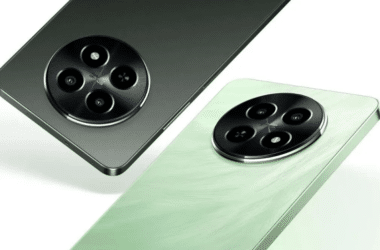Exploring the Camera Performance of Google Pixel 8 Pro
In the world of smartphones, camera performance has become a defining factor for many consumers. Google’s Pixel series has always been synonymous with exceptional camera capabilities. However, the Pixel 8 Pro, the latest addition to the Pixel family, faces some stiff competition from other flagship devices. In this article, we will delve into the camera prowess of the Pixel 8 Pro, exploring its strengths and where it falls short.
The Pixel 8 Pro’s Camera Rating by DXOMARK
DXOMARK is a renowned authority in camera testing, and their verdict often serves as a benchmark for smartphone camera quality. According to their tests, the Pixel 8 Pro ranks fourth globally, even in the ultra-premium category. The top three spots are occupied by the Huawei P60 Pro, iPhone 15 Pro Max, and iPhone 15 Pro. While this ranking may not place the Pixel 8 Pro at the very top, it’s essential to note that it still excels in many aspects.
Daylight Photography and Videography
One of the standout features of the Pixel 8 Pro’s camera is its performance in daylight photography and videography. It secures the top position in this category, delivering stunning visuals. The wide category is where the Pixel 8 Pro truly shines, with ultra-wide photos exhibiting high image quality, even in low-light conditions. Notably, the Pixel 8 Pro employs a new 48MP ultra-wide-angle lens, which has been praised as one of the most capable ultra-wide lenses tested by DXOMARK.
‘Friends & Family’ Use Case
In the ‘Friends & Family’ use case, the Pixel 8 Pro stands strong, ranking third among its competitors. Its key highlights in this category include great skin tone accuracy, zero shutter lag, and an impressive bokeh mode. The smartphone excels in delivering natural-looking complexions for all skin tones, contributing to stunning portraits.
Overall Image Quality
The Pixel 8 Pro consistently produces images with pleasant colors, achieving a neutral white balance and accurate color rendering under various lighting conditions. It also ensures accurate target exposure, although there may be occasional instances of slight underexposure of subjects.
Low-Light Photography
In low-light conditions, the Pixel 8 Pro manages to capture images with accurate exposure and natural rendering of the scene. Its noise management is commendable, but there can be instances of slightly higher loss of fine detail in some shots. Despite this, it remains a reliable choice for low-light photography.
Selfies and Close-Up Shots
When it comes to selfies, the Pixel 8 Pro secures the second position, just trailing behind the iPhone 15 Pro Max. DXOMARK commends the phone for delivering excellent performance, particularly in color rendering. Whether it’s close-up or long-distance shots, the Pixel 8 Pro offers a better texture-to-noise trade-off, thanks to its new autofocus technology.
In conclusion, while the Pixel 8 Pro may not claim the top spot in the DXOMARK rankings, it boasts impressive camera capabilities that cater to a wide range of photography scenarios. Whether you’re into daylight photography, capturing moments with friends and family, or taking stunning selfies, the Pixel 8 Pro can deliver exceptional results. Its ability to handle low-light photography also makes it a reliable choice for various lighting conditions.
| Key Specs | Details |
|---|---|
| RAM | 12 GB |
| Processor | Google Tensor G3 |
| Rear Camera | 50 MP + 48 MP + 48 MP |
| Front Camera | 10.5 MP |
| Battery | 5050 mAh |
| Display | 6.7 inches (17.02 cm) |
| Launch Date | October 4, 2023 (Official) |
| Operating System | Android v14 |
| Performance | Details |
|---|---|
| Chipset | Google Tensor G3 |
| CPU | Nona Core (3 GHz, Single core, Cortex X3 + 2.45 GHz, Quad core, Cortex A715 + 2.15 GHz, Quad core, Cortex A510) |
| Co-Processor | Titan M2 |
| Architecture | 64 bit |
| Fabrication | 4 nm |
| Graphics | Immortalis-G715 MC10 |
| RAM | 12 GB |
| Display | Details |
|---|---|
| Display Type | OLED |
| Screen Size | 6.7 inches (17.02 cm) |
| Resolution | 1344 x 2992 pixels |
| Aspect Ratio | 20:9 |
| Pixel Density | 490 ppi |
| Screen to Body Ratio (calculated) | 87.13% |
| Screen Protection | Corning Gorilla Glass, Glass Victus 2, Scratch-resistant glass |
| Bezel-less display | Yes with punch-hole display |
| Touch Screen | Yes, Capacitive Touchscreen, Multi-touch |
| Brightness | 2400 nits |
| HDR 10 / HDR+ support | Yes, HDR 10+ |
| Refresh Rate | 120 Hz |
| Design | Details |
|---|---|
| Height | 162.6 mm |
| Width | 76.5 mm |
| Thickness | 8.8 mm |
| Weight | 213 grams |
| Build Material | Back: Gorilla Glass Victus 2 |
| Colours | Obsidian, Bay |
| Waterproof | Yes, Water resistant (up to 30 minutes in a depth of 1.5 meter), IP68 |
| Ruggedness | Dust proof |
| Camera | Details |
|---|---|
| MAIN CAMERA | |
| Camera Setup | Triple |
| Resolution | 50 MP f/1.68, Wide Angle (82° field-of-view), Primary Camera (25 mm focal length, 1.31″ sensor size, 1.2µm pixel size) |
| 48 MP f/1.95, Ultra-Wide Angle Camera (0.8µm pixel size) | |
| 48 MP f/2.8, Telephoto Camera (113 mm focal length, 2.55″ sensor size, 0.7µm pixel size) | |
| Sensor | S5KGN2, ISOCELL Plus |
| Autofocus | Yes, Phase Detection autofocus, Laser autofocus |
| OIS | Yes |
| Flash | Yes, Dual LED Flash |
| Image Resolution | 8150 x 6150 Pixels |
| Settings | Exposure compensation, ISO control |
| Shooting Modes | Continuous Shooting, High Dynamic Range mode (HDR), Macro Mode |
| Camera Features | Digital Zoom, Auto Flash, Face detection, Touch to focus |
| Video Recording | 3840×2160 @ 24 fps, 1920×1080 @ 30 fps |
| Video Recording Features | Slo-motion, Video HDR, Macro Video, Audio Zoom, Stereo recording |
| FRONT CAMERA | |
| Camera Setup | Single |
| Resolution | 10.5 MP f/2.2, Ultra-Wide Angle, Primary Camera (20 mm focal length, 3.1″ sensor size, 1.22µm pixel size) |
| Autofocus | Yes, Phase Detection autofocus |
| Video Recording | 3840×2160 @ 24 fps, 1920×1080 @ 30 fps |
| Battery | Details |
|---|---|
| Capacity | 5050 mAh |
| Type | Li-ion |
| Removable | No |
| Wireless Charging | Yes |
| Quick Charging | Yes, Fast, 30W: 50% in 30 minutes |
| USB Type-C | Yes |
| Storage | Details |
|---|---|
| Internal Memory | 128 GB |
| Expandable Memory | No |
| USB OTG | Yes |
| Storage Type | UFS 3.1 |
| Network & Connectivity | Details |
|---|---|
| SIM Slot(s) | Dual SIM, GSM+GSM |
| SIM Size | SIM1: Nano, SIM2: eSIM |
| Network Support | 5G Supported in India, 4G Supported in India, 3G, 2G |
| VoLTE | Yes |
| SIM 1 | 5G Bands: FDD N1 / N2 / N3 / N5 / N7 / N8 / N12 / N20 / N25 / N26 / N28 / N30 |
| TDD N38 / N40 / N41 / N66 / N71 / N75 / N76 / N77 / N78 | |
| 4G Bands: TD-LTE 2600(band 38) / 2300(band 40) / 2500(band 41) / 2100(band 34) / 3500(band 42) | |
| FD-LTE 2100(band 1) / 1800(band 3) / 2600(band 7) / 900(band 8) / 700(band 28) / 1900(band 2) / 1700(band 4) / 850(band 5) / 700(band 13) / 700(band 14) / 700(band 17) / 850(band 18) / 850(band 19) / 800(band 20) / 1900(band 25) / 850(band 26) / 2300(band 30) | |
| 3G Bands: UMTS 1900 / 2100 / 850 / 900 MHz | |
| 2G Bands: GSM 1800 / 1900 / 850 / 900 MHz | |
| GPRS: Available | |
| EDGE: Available | |
| SIM 2 | 5G Bands: FDD N1 / N2 / N3 / N5 / N7 / N8 / N12 / N20 / N25 / N26 / N28 / N30 |
| TDD N38 / N40 / N41 / N66 / N71 / N75 / N76 / N77 / N78 | |
| 4G Bands: TD-LTE 2600(band 38) / 2300(band 40) / 2500(band 41) / 2100(band 34) / 3500(band 42) | |
| FD-LTE 2100(band 1) / 1800(band 3) / 2600(band 7) / 900(band 8) / 700(band 28) / 1900(band 2) / 1700(band 4) / 850(band 5) / 700(band 13) / 700(band 14) / 700(band 17) / 850(band 18) / 850(band 19) / 800(band 20) / 1900(band 25) / 850(band 26) / 2300(band 30) | |
| 3G Bands: UMTS 1900 / 2100 / 850 / 900 MHz | |
| 2G Bands: GSM 1800 / 1900 / 850 / 900 MHz | |
| GPRS: Available | |
| EDGE: Available | |
| Wi-Fi | Yes, Wi-Fi 7 (802.11 a/b/g/n/ac/be/ax) 5GHz 6GHz, MIMO |
| Wi-Fi Features | Mobile Hotspot |
| Bluetooth | Yes, v5.3 |
| GPS | Yes with A-GPS, Glonass |
| NFC | Yes |
| USB Connectivity | Mass storage device, USB charging |
| Multimedia | Details |
|---|---|
| FM Radio | No |
| Stereo Speakers | Yes |
| Loudspeaker | Yes |
| Audio Jack | USB Type-C |
| Sensors | Details |
|---|---|
| Fingerprint Sensor | Yes |
| Fingerprint Sensor Position | On-screen |
| Fingerprint Sensor Type | Optical |
| Other Sensors | Light sensor, Proximity sensor, Accelerometer, Barometer, Compass, Gyroscope |
Frequently Asked Questions (FAQs)
Is the Pixel 8 Pro’s camera better than the iPhone 15 Pro Max and iPhone 15 Pro?
While the Pixel 8 Pro is an excellent performer, it ranks fourth in DXOMARK’s global camera tests, just below the two iPhone models. However, it excels in specific aspects of photography.
What makes the Pixel 8 Pro stand out in daylight photography?
The Pixel 8 Pro’s camera is exceptional in daylight photography and videography, securing the top position in this category. Its wide and ultra-wide capabilities, along with the new 48MP ultra-wide-angle lens, contribute to its success.
How does the Pixel 8 Pro perform in low-light conditions?
In low-light photography, the Pixel 8 Pro captures images with accurate exposure and natural rendering. While it manages noise well, there may be some instances of slightly reduced fine detail.
Why is the Pixel 8 Pro a good choice for selfies?
The Pixel 8 Pro is known for its excellent selfie performance, especially in color rendering. Its new autofocus technology enhances the texture-to-noise trade-off, resulting in better selfie quality.
Should I consider the Pixel 8 Pro for photography?
If photography is a crucial factor for you in choosing a smartphone, the Pixel 8 Pro offers a compelling package. While it may not top the charts, it excels in various photography scenarios and produces pleasing results.

